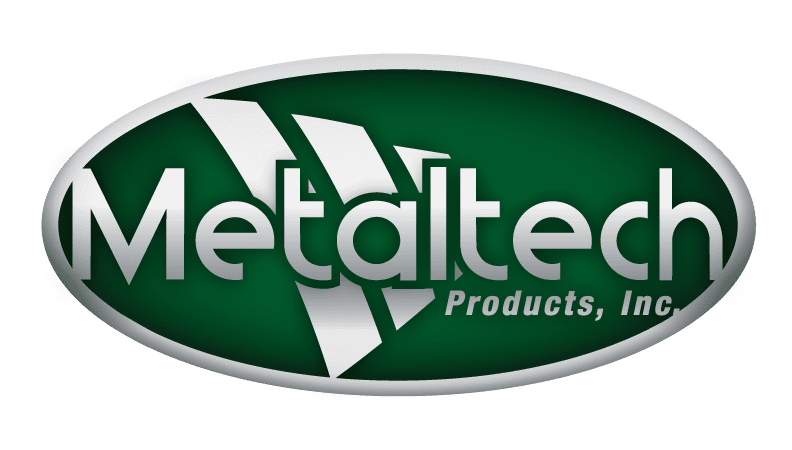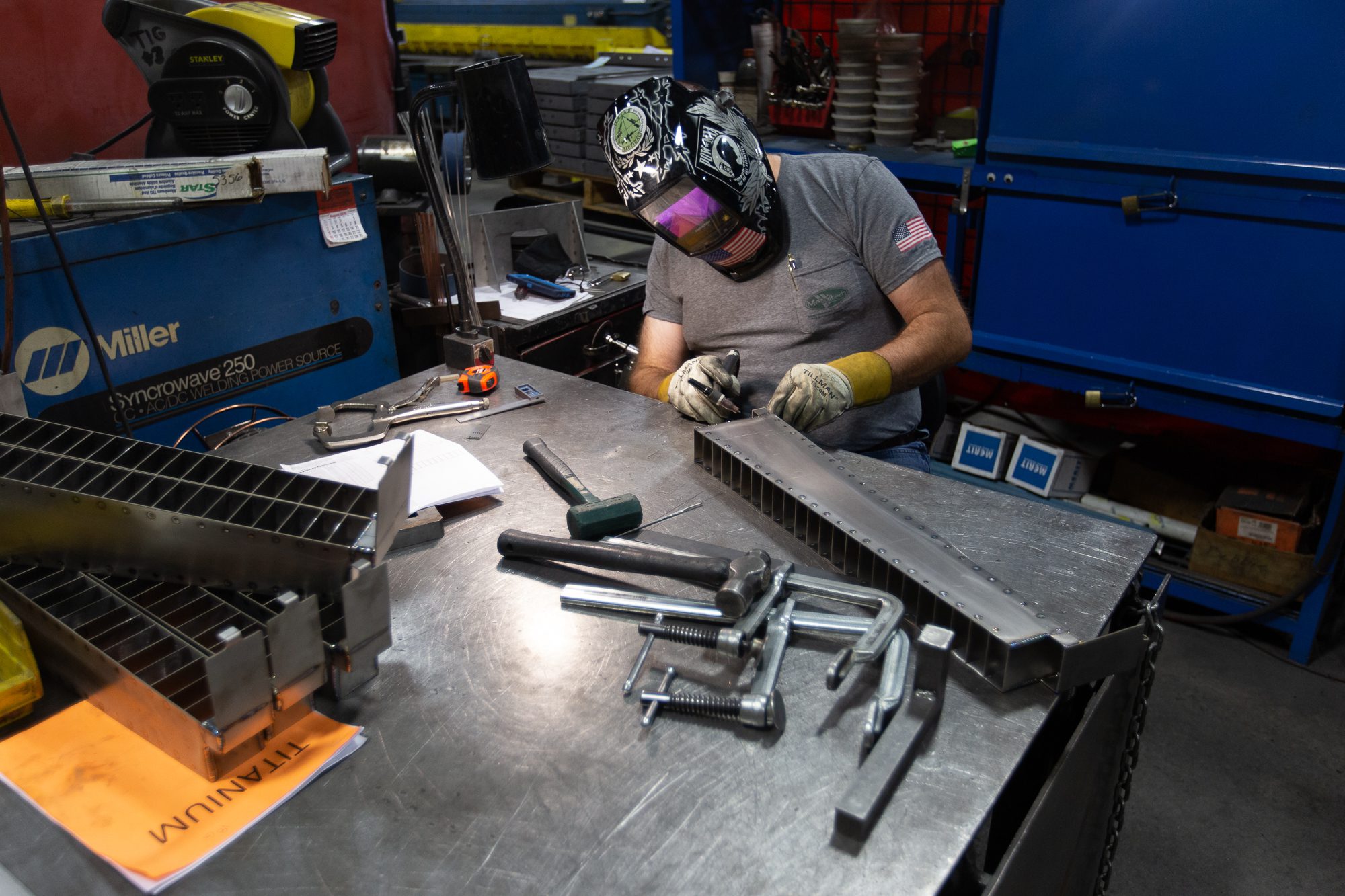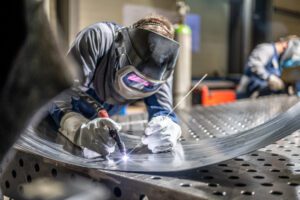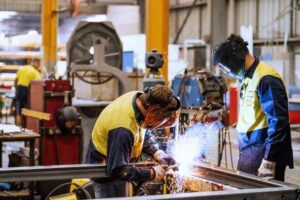Metals are manipulated to create components we rely on every day. Different processes transform billets and sheets of metal into their desired shapes. Our cars, laptops, cell phones, and kitchen appliances exist because of the metal fabrication process.
Metal fabrication encompasses every step needed to create a final component part or product. Before you start your custom fabrication project, it’s helpful to know how skilled technicians transform raw materials into finished parts.
Bring Your Idea to Life
Most fabrication projects will not go through every metal fabrication process available. For example, producing your components may not require milling or stamping. One thing that all projects have in common is design. Without a good design, you won’t create a functional part.
Engineers will help you develop ideas into manufacturable designs, refine existing blueprints or test prototypes. A blueprint lets everyone on the project know what materials to use, what size the part will be, and what the part should look like from various angles.
Prototyping puts your design into action by testing the part before mass production. Turnaround time on a design depends entirely on its complexity, so it is important to schedule accordingly.
Fabrication vs Manufacturing
Before we get into the specifics of fabrication, let’s take a look at the differences between fabrication vs. manufacturing. Even though the terms are sometimes used interchangeably, they are not the same thing.
The fabrication process takes raw materials such as sheet metal and turns them into parts or products. Manufacturing takes those parts and assembles them into other products.
Types of Fabrication Processes
After finalizing the design, it’s time to begin production. What is the fabrication process? What types of metalwork will take place? Your fabrication project may go through several phases or only a few.
Cutting
Whether you’re producing patio furniture or computer frames, cutting raw material down to size is essential. Various methods are used to cut a given material efficiently. Cutting operations remove excess material from the workpiece and give the part its first (but likely not final) shape.
Popular techniques include laser cutting, sawing and using a punch press.
- Laser cutter. A laser cutting machine slices through material precisely without any physical contact. The machine’s laser beam cuts shapes, creates contours and slits metal with ease.
- Saw. Band saws and cold saws are best for cutting bars, pipes and other structural materials.
- Punch press. Punch presses can be used for many purposes. They carve into metal, cut holes and add perforations.
Punching
Many parts need holes, slots or other formed characteristics. Punching adds holes and features by removing metal or pressing shapes into the metal. Punching is performed by a punch press, which has a punch and a die. The machine pushes the punch through the workpiece and creates a hole in the die’s shape and size.
Stamping
Unlike punching, stamping doesn’t penetrate through metal. No holes are created in this process. Stamping uses a die to make an indention in the metal. Logos, names, numbers and images can all be stamped onto the workpiece.
Forming
After being cut, workpieces may need to be bent at various angles. Bending or folding metal into a specified shape is called forming. Parts are not cut or broken in this phase, only manipulated into shapes. As opposed to forging, bending metal by forming doesn’t require any blows to the material. A press brake pinches the metal workpiece at a specified angle to create a bend. The pressure from the machine’s grip forms a crease in the metal and gives it its shape.
Machining
When more material needs to be removed from a workpiece, the parts are machined to achieve their final shape. Precise shapes, sizes and finishes can be acquired with machining centers. Like other processes, machining can be completed manually or with a computerized machine.
- Turning. Cylindrical profiles are made with a lathe. When using a lathe, the workpiece rotates while a stationary cutting tool eats away at external material.
- Milling. The opposite of turning is milling. A mill uses a rotating cutting tool to remove material from a stationary workpiece. When face milling, the top of the cutting tool removes material from the workpiece. During peripheral milling, the cutting tool’s sides meet the workpiece, removing larger amounts of metal.
- Drilling. Does the final component need holes? Drilling cuts circular holes into workpieces. A drill bit enters the material and removes what’s in its path.
- Boring. Sometimes technicians need to enlarge holes in a workpiece. Boring is a process that cuts material from an existing hole.
- Reaming. Holes need to be accurate. Ensuring a hole’s dimensional accuracy and smoothing its interior finish is done through reaming.
- Grinding. When identical parts are required, grinding helps create precise shapes and finishes by removing leftover material.
- Threading. Adding external or internal threads to workpieces ensures they can be joined to other components or attached with screws, bolts and other fasteners later.
Welding
When it’s time to bring everything together, welding marries the pieces to form a final part. Using heat and pressure, welders fuse metal components or sheets to join them together.
Metal Inert Gas Welding (MIG), also known as Gas Metal Arc Welding (GMAW), is the most common type of welding. It can be used with various metals, from steel to aluminum. MIG welding is effective at fusing thick materials and dissimilar metals.
Another welding process is Tungsten Inert Gas Welding (TIG), or Gas Tungsten Arc Welding (GTAW). TIG welding creates precise, aesthetic welds with thin materials or non-ferrous metals. This type of welding can neatly fuse aluminum, copper, nickel and titanium. It produces cleaner welds but takes longer to complete when compared to MIG welding.
Choosing a Metal Fabrication Shop
Custom metal fabricators work with you to develop and produce parts. When choosing a metal fabrication company, you should consider the company’s experience, capabilities and resources. An established shop with experience across industries will give you peace of mind that the finished parts will meet your expectations.
When you talk to a metal fabricator, you want to ensure they offer the capabilities you need. You may wish to inquire about their fabrication services, design support, stock materials and capacity. Learning more about a company can help you determine if you would like to work with them.
Is your company ready to start a custom fabrication project? Do you need to produce component parts? Reach out to Metaltech!
Request a quote or give us a call at 417-426-5577. Let’s start your fabrication project.




